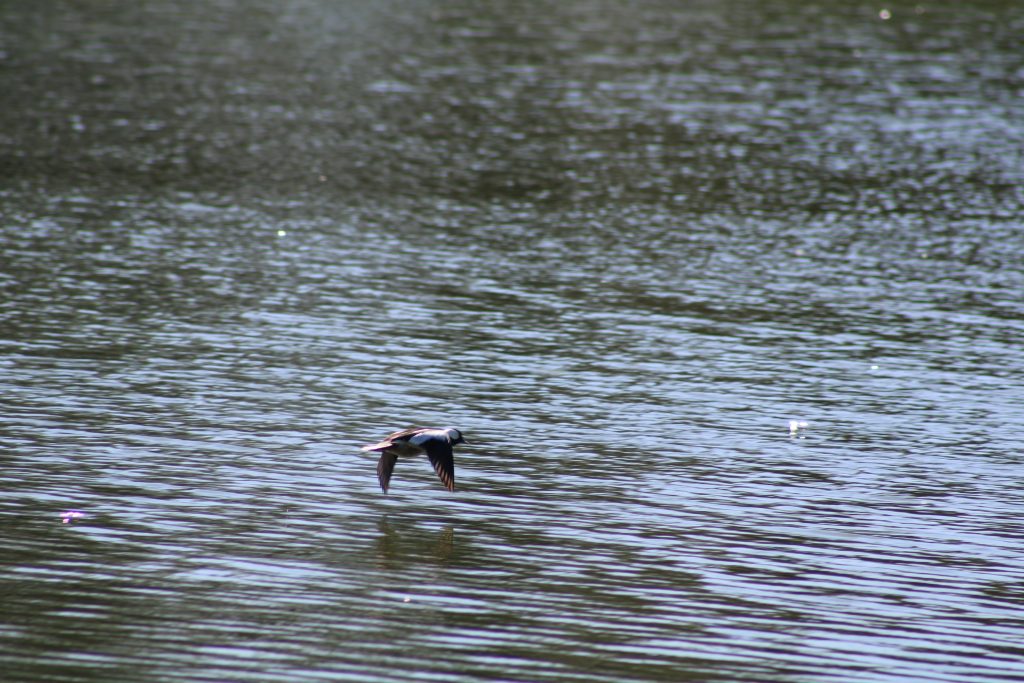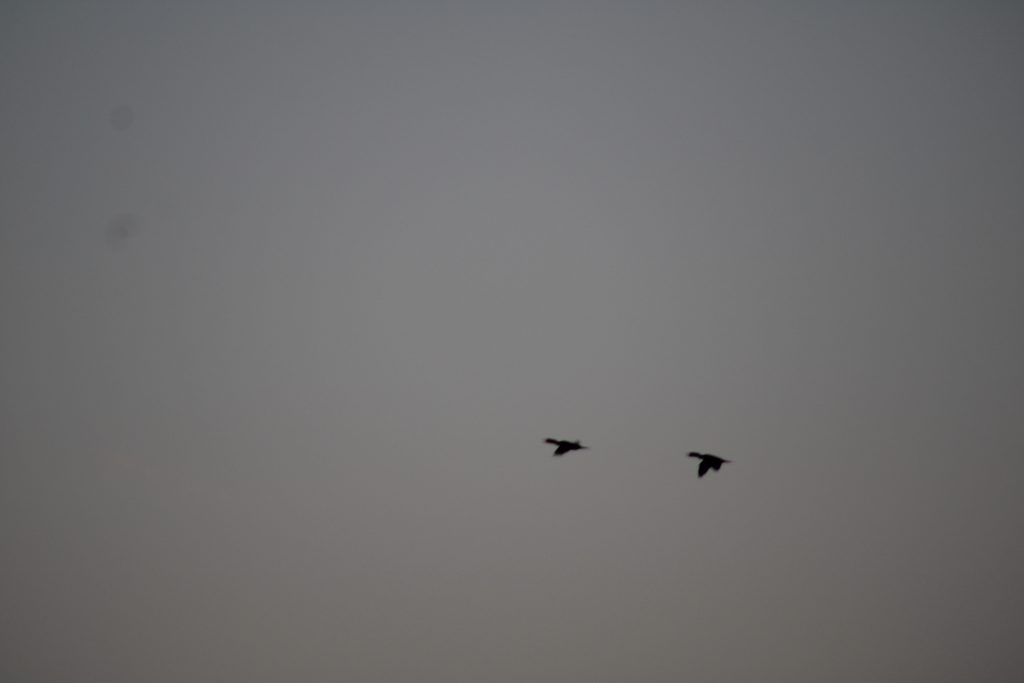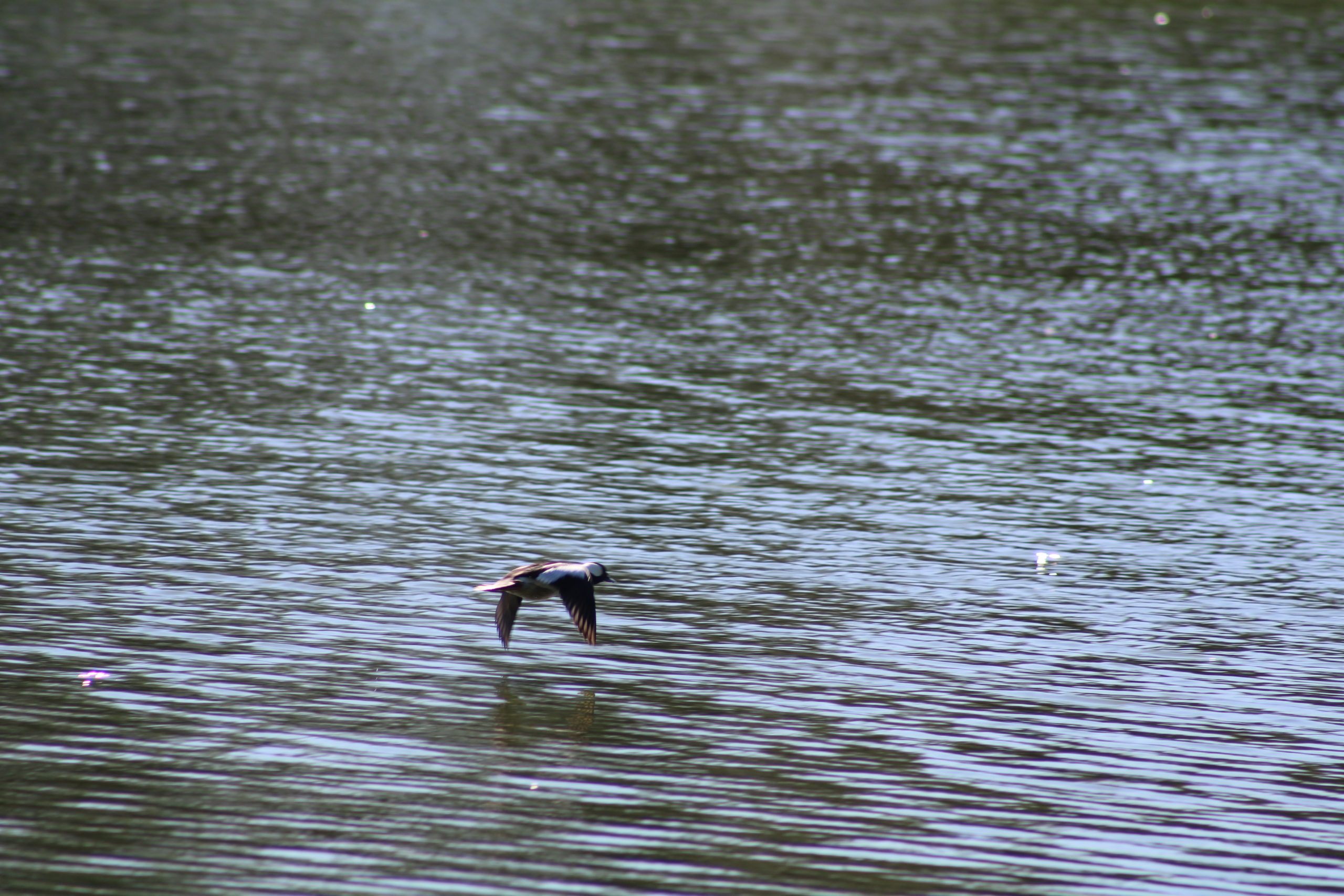Most ducks can fly. While some types of ducks are unable to get their feet off the ground, others undertake impressive migrations spanning thousands of miles.
Let’s explore what you need to know about flying ducks.
Key facts:
- Most ducks can fly.
- Some domestic duck breeds, aka farm ducks, are incapable of flight.
- Most wild ducks are fast and agile fliers.
Can ducks fly?

Ducks are highly adept fliers, possessing strong wings and a remarkable ability to navigate the skies. While not all ducks are equally proficient in flight, the majority of species are capable of taking to the air.
Mallards, for example, are known for their remarkable flying skills, covering long distances during migration. Ducks rely on their well-developed pectoral muscles to generate the power needed for takeoff and sustained flight.
For most ducks, flight is an integral aspect of their lives. With the help of flight, ducks can escape predators, find food, and migrate to more favorable environments. However, it’s important to note that some duck species, particularly domesticated ones, may have reduced flight capabilities due to selective breeding. Despite this, the innate ability of ducks to fly remains a fascinating and essential aspect of their behavior in the wild.
What kinds of ducks can’t fly?
Certain duck species exhibit limited or diminished flight capabilities, often as a result of selective breeding or specific environmental factors. Domesticated ducks, such as the popular Pekin or Khaki Campbell breeds, are commonly raised for their meat or eggs and have been selectively bred to prioritize other traits over flying ability. These ducks often possess heavier bodies and shorter wingspans, making sustained flight challenging for them.
Additionally, some individual ducks in the wild may experience temporary flight restrictions due to molting. During the molting period, ducks shed and regrow their flight feathers, rendering them temporarily flightless. This natural process occurs annually and is crucial for maintaining healthy and functional plumage.
How do ducks fly?
The key to their flight lies in their powerful wing muscles and aerodynamic wing structure. Ducks generate thrust and lift during takeoff using their robust pectoral muscles, propelling themselves into the air with a burst of energy. Their wings, characterized by a pointed and streamlined shape, minimize air resistance, allowing for efficient and agile flight.
Once airborne, ducks utilize their keen sense of navigation to soar through the skies with grace. They adjust the positioning of their wings and tail feathers to control direction and speed.
How fast can ducks fly?

Most ducks can fly faster than you think. In general, ducks can fly at speeds of 40 to 60 mph!
Mallards, one of the most widespread duck species, can reach speeds of up to 55 miles per hour during flight. This remarkable speed is attributed to their powerful wing muscles and streamlined body structure. In contrast, smaller duck species may have slightly lower flying speeds.
How far can ducks fly?
The flying range of ducks varies considerably depending on the species and their specific migration patterns.
Mallards, for example, are known to cover impressive distances during their annual migrations, with recorded flights spanning up to 800 miles. Other species, such as Northern Pintails, are renowned for even more extensive journeys, with some individuals embarking on migrations that can surpass 3,000 miles.
Why do ducks fly in a V shape?
Ducks often fly in a distinctive V-shaped formation for several strategic reasons rooted in aerodynamics and energy conservation. This behavior is particularly noticeable during migration, where ducks cover extensive distances. The V-shaped formation reduces air resistance for each bird flying behind the leader, creating an energy-efficient pattern. The lead duck takes the brunt of the wind, and those following experience less drag, allowing them to conserve energy during long flights.
Ducks maintain precise spacing and alignment within the formation, facilitating clear visual contact and honking communication. This synchronized approach enhances the overall efficiency of the group, helping them navigate complex terrains, locate suitable resting spots, and respond collectively to potential threats.
What are duck flyways?
Flyways are crucial migratory routes that birds, including ducks, follow during their annual migrations. These flyways are well-defined paths that connect breeding grounds in the northern hemisphere to wintering areas in the south, ensuring the birds can access suitable habitats throughout the year.
There are four primary flyways in North America: the Pacific, Central, Mississippi, and Atlantic Flyways. Each flyway encompasses a network of rivers, lakes, and wetlands that provide essential stopover points for resting, feeding, and breeding.
These flyways serve as vital ecological corridors, facilitating the seasonal movements of millions of ducks and other birds each year. The Pacific Flyway, for instance, extends along the western coast of North America, guiding ducks from Alaska to wintering grounds in California and Mexico. The Central Flyway covers the interior regions, guiding ducks from the Arctic to the Gulf of Mexico. The Mississippi and Atlantic Flyways similarly guide ducks through central and eastern parts of North America.
Can ducks fly: Frequently Asked Questions
You have questions about whether or not ducks can fly. We have answers.
Can certain ducks not fly?
Yes, certain duck species, especially domesticated ones, may have reduced flight capabilities. Selective breeding for specific traits in domestic ducks can result in individuals with heavier bodies and shorter wingspans, making sustained flight challenging for them.
Can ducks fly out of water?
Yes, ducks are capable of taking off and flying from water. Ducks often take flight from water for various reasons, such as escaping predators or relocating to different feeding areas.
Can all ducks fly?
While the majority of duck species are capable of flying, there are exceptions. Domesticated ducks, as mentioned earlier, may have limited flight abilities due to selective breeding. Additionally, during molting periods, ducks shed and regrow their flight feathers, rendering them temporarily flightless.
How do you identify ducks in the air?
Identifying ducks in the air involves observing their distinctive flight patterns, wing shapes, and coloration. Size, shape, and the presence of specific markings or color patterns on the wings and body can be helpful. Field guides and birding resources often provide illustrations and descriptions of different duck species to aid in identification.
Speaking from experience, it can be difficult to identify any flying bird, including ducks.
Do ducks get tired of flying?
Ducks, like many migratory birds, are adapted for long flights, and their physiology allows them to cover vast distances during migration. However, like any endurance activity, flying requires energy, and ducks may experience fatigue, especially during extended flights. They often rest and feed at stopover points along their migratory routes to replenish energy stores and minimize fatigue.
